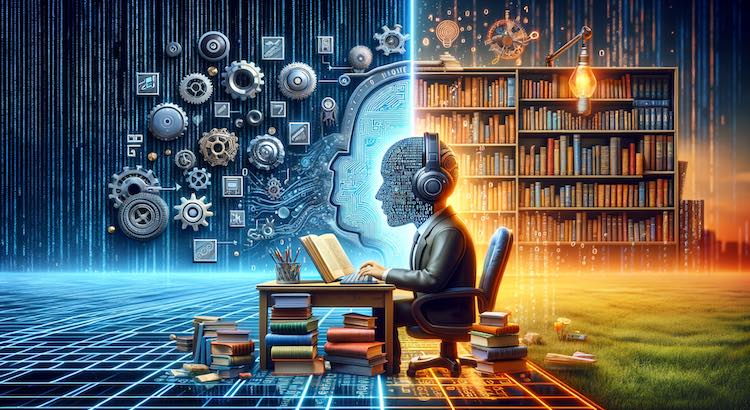Transcription services have become essential for researchers, journalists, podcasters, educators, and many professionals. With the vast amount of audio and video content created daily, transcribing spoken words into text saves time and increases accessibility and understanding. Two main options exist: automated transcription software and human transcription services. This guide breaks down the pros and cons of each, helping you decide which approach best fits your research or business needs.
The Benefits of Automated Transcription Software
Automated transcription uses artificial intelligence (AI) and machine learning to quickly convert speech to text. These tools have advanced rapidly in recent years and are now popular for many types of projects.
Pros of Automated Transcription
- Fast Transcription Speed: Automated tools can transcribe hours of audio in minutes (Statista, 2023).
- Cost-Effective: Automated services cost much less than hiring human transcribers. They work well for large projects with tight budgets.
- Scalable: AI-powered tools can handle huge volumes of data without getting slower.
- 24/7 Availability: Services run at all hours, so there is no need to wait for business hours or different time zones.
- Easy Subscription Options: Platforms often provide flexible AI transcription subscription plans for frequent users.
Cons of Automated Transcription
- Lower Accuracy with Accents: Automated tools may misinterpret accents, dialects, or technical terms, especially in noisy environments.
- Struggles with Background Noise: Overlapping speech or noise can confuse AI, leading to errors (Forbes, 2022).
- Misses Nuance: Automated programs often do not catch humor, sarcasm, emotions, or the subtleties of human conversations.
- No Human Review: There is no built-in way for software to clarify unclear phrases or check its own work. That can require transcription proofreading services for accuracy.
When Should You Use Automated Transcription?
- To quickly turn around large batches of audio or video files
- For projects with clear audio and minimal background noise
- When budget is the top concern
- If speed matters more than perfect precision
If you want to test out affordable pricing or see details, review transcription pricing from top providers.
The Human Advantage: Professional Transcription Services
Human transcription services employ skilled people who listen to recordings and transcribe them word-for-word. This approach is valued for challenging audio and when perfect accuracy is important.
Pros of Human Transcription
- High Accuracy: Human transcribers understand jargon, slang, technical terms, and subtle meaning in context (NPR, 2021).
- Handles Difficult Audio: Background noise, multiple speakers, or low-quality audio are easier for humans to interpret.
- Captures Meaning and Tone: Professional transcriptionists pick up on irony, emotion, or intent, which is vital for research interviews.
- Extra Services: Teams often offer closed caption services or subtitling services for videos to further improve accessibility.
- Confidential and Secure: Many companies sign confidentiality agreements and use secure systems for sensitive data.
Cons of Human Transcription
- Slower Turnaround: Human transcription is not instant. It can take hours or even days for lengthy files.
- Higher Cost: Manual transcribing costs more per minute or hour of audio, especially for rush jobs.
- Not Instantly Scalable: For enormous projects, staffing more transcribers or managing workflow requires time and planning.
When Does Human Transcription Make Sense?
- Projects where accuracy is essential, such as academic research or legal proceedings
- Audio with heavy accents, multiple speakers, or poor quality
- When tone, context, and emotion are important to your results
- If you require security, privacy, or transcription under a non-disclosure agreement
Organizations working globally can also utilize text translation services or audio translation services for multilingual projects.
Making the Choice: What’s Right for Your Needs?
Automated transcription and human transcription each have strengths. Your optimal choice depends on your project’s scope, requirements, and budget.
Key Considerations:
- Accuracy vs. Speed: If you need nearly error-free results, especially for research or legal files, choose humans. If a quick draft will do, go with automation.
- Budget: Auto-transcription fits tight budgets, but factor in potential extra proofreading costs for interviews or complex material.
- Type of Content: Podcasts, academic interviews, and medical notes may be too technical for AI alone.
- Volume of Work: For high volume on a deadline, automated solutions scale better.
- Sensitivity and Security: Use human professionals for confidential, private, or high-stakes material. Many providers highlight their secure processes.
For high-value projects, some researchers use both types together—starting with an automated draft and finishing with proofreading services by humans.
Conclusion: Getting the Best Transcription for Your Project
Both automated and human transcription play an important role in content creation, research, and accessibility. Automated tools are fast and affordable, while human services deliver high accuracy and contextual understanding. Consider your priorities: do you need speed and scalability, or perfection and nuance? By weighing the pros and cons for your specific needs, you can choose wisely for your next project.
For all your transcription needs—from ordering transcription to ordering captions—GoTranscript offers both automated and human solutions, competitive pricing, and a wide array of related services. Whether your priority is speed, accuracy, or security, GoTranscript helps you transform your audio into easy-to-use, reliable text.



















 Verified Order
Verified Order